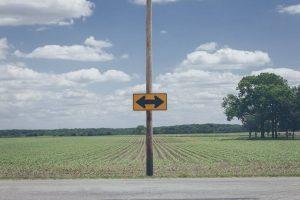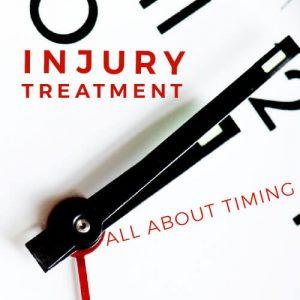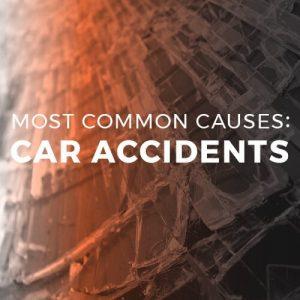
According to the Federal Highway Administration (FHWA), more than half of the combined total of fatal and injury accidents occur at or near intersections—many of these occur when one driver is making a left turn across traffic. There are many dangers associated with making a left turn. Drivers must use extreme caution when turning left, especially in heavy traffic or when there is no dedicated turn lane or traffic signal.
The complex laws that apply to making a turn at an intersection can also make resolving these claims more difficult. For example, it can be challenging to prove that a driver failed to yield before turning without video footage or additional witnesses.
Why Are Left Turns So Dangerous?
In most situations, a driver must turn across oncoming traffic to make a left turn. If there is no turn lane, they must come to a stop in the traffic lane. However, when other motorists are driving down a straightaway, they sometimes get too focused on traveling forward and can fail to notice a vehicle waiting to make a left-hand turn ahead. This mistake causes a dangerous situation and is a common cause of rear-end crashes.
In other cases, the driver making a left turn may mistakenly think that an oncoming driver is slowing down to allow the maneuver, especially if that vehicle is using a turn signal. Misjudging speeds or intentions is another way a left turn accident can easily happen.
Sometimes, a driver making a left turn tries to “beat” the oncoming traffic. However, it’s hard to judge how much time is needed to get across the intersection. If a driver’s calculations are even a little bit off, there is a huge risk of a serious motor vehicle accident. This is because oncoming traffic usually travels at a higher speed than the turning vehicle—anytime speed increases, the risk of severe injuries goes up.
For a free legal consultation, call 800-537-8185
Traffic Laws Make Left Turn Claims Even More Complex
When an injured motorist pursues compensation for their accident injuries, they must prove the other driver acted negligently, usually by violating a traffic law. Sometimes, the laws make this difficult. For example, in Louisiana, La. R.S. 32:122 states:
“The driver of a vehicle within an intersection intending to turn to the left shall yield the right of way to all vehicles approaching from the opposite direction which are within the intersection or so close thereto as to constitute an immediate hazard.”
In plain language, that means that when a driver turns left, they have the duty to yield to oncoming traffic. Other states, such as Mississippi (Miss. Code Ann. § 63-3-803), Alabama (Ala. Code § 32-5A-111), and Arkansas (Ark. Code Ann. § 27-51-502), have similar regulations that also place this duty on drivers.
Proving you yielded appropriately and followed other best practices while turning can be almost impossible unless a video of the crash or other witnesses can corroborate your story that the other driver caused or contributed to the crash.
The Police Officers May Assume You Caused the Crash
It can be difficult to prove you had a left-hand turn arrow and the other driver ran the light. Instead, the accident often appears to be the fault of a driver who failed to yield to oncoming traffic.
If you are in an accident where you were the driver making the left turn, you will almost always be found at fault. The police, insurers, and others may assume you failed in your duty to yield to oncoming traffic. There may even be a legal presumption that you were negligent. The law will assume you are at fault until you show otherwise.
While it is possible to show that you were not negligent when making a left turn, it is often very difficult because doing so requires:
- Knowledge of the law
- Strong evidence showing what caused the collision
- Proving the identity of the at-fault driver
- Knowing how to navigate the process to present this evidence and demand compensation
How an Attorney Can Help Prove Your Left-Hand Turn Claim
Crash claims involving left turns are rarely quick and easy. More time and effort are required to argue who was at fault and legally liable for the collision. Sometimes, responding officers may even claim you were at fault in the police report, leaving you to argue against this key document.
Keep this in mind the next time you’re in a hurry to get to your favorite restaurant or shop on the other side of the intersection. It is important to yield to oncoming traffic when making a left turn. Also, wait that extra couple of seconds to confirm the “all clear” before you go. Doing so can make the road safer for everyone and possibly even prevent you from being involved in a serious left-turn collision.
Click to contact our personal injury lawyers today
What You Could Recover in a Successful Car Accident Claim
If your attorney can prove you were the victim of a left-turn crash, you may recover money damages through an insurance claim or lawsuit against the at-fault driver. This could allow you to secure a financial recovery to address your costs and losses, including:
- Medical bills, including future care costs
- Lost wages
- Reduced earning ability for long-term injuries
- Property damages
- Additional losses and expenses
- Pain and suffering
- Mental anguish
Our personal injury firm provides free consultations and represents clients on a contingency-fee basis. This fee structure means you can afford representation even if you do not have the money to pay today.
Morris Bart, LLC Handles Left-Turn Collision Claims in the Gulf South
Dealing with a collision claim can be a lot easier if you have an attorney on your side, especially if you were the left-turning driver. The Morris Bart law firm has decades of experience dealing with the complexities of insurance claims and car accidents.
If you were hurt in a left-turn wreck in Alabama, Arkansas, Louisiana, or Mississippi, we provide free consultations. Call (800) 537-8185 to speak with an attorney about your case for free today.
Questions?Call 800-537-8185
to find a Morris Bart office near you.





